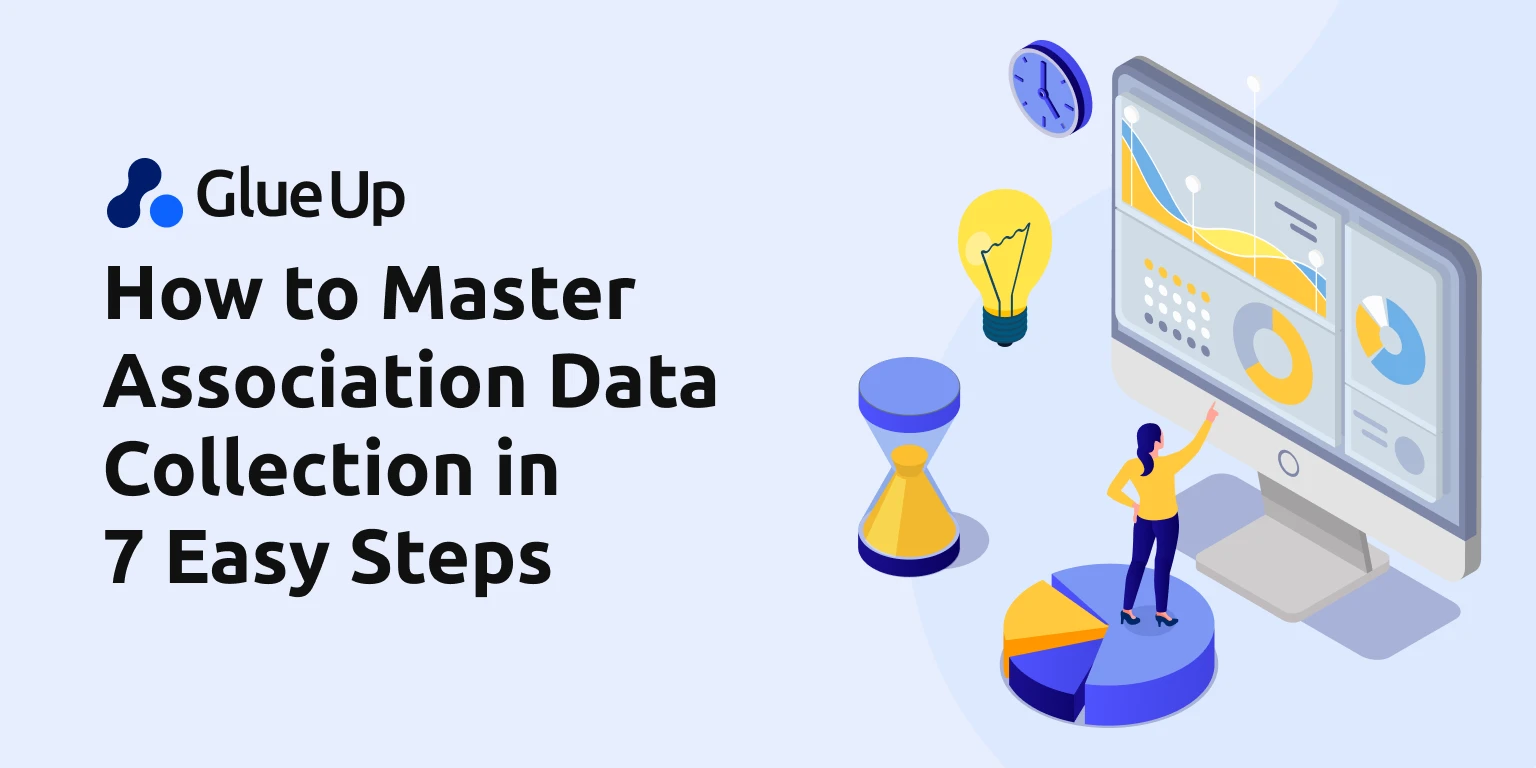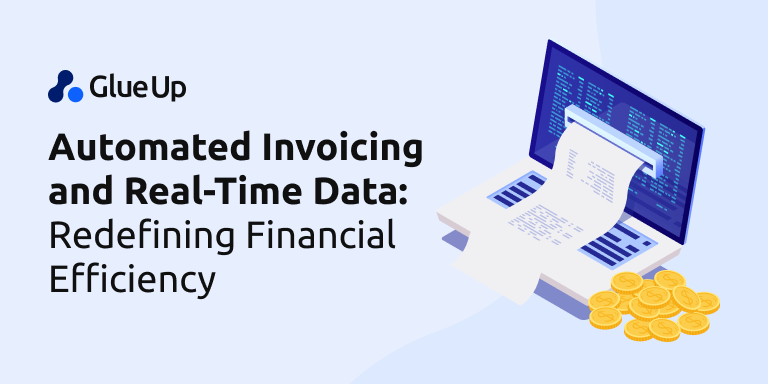
Associations struggle to gather relevant data, which leads to missed opportunities and ineffective decision-making, as they often proceed without a clear strategy, resulting in piles of unused information.
As Mark Twain wisely said, "Data is like garbage. You’d better know what you are going to do with it before you collect it." This highlights the need to approach data collection with a well-defined purpose.
In this blog, we’ll address issues related to data collection, such as inconsistent data entry, lack of integration between systems, difficulty turning raw data into actionable insights, and challenges in maintaining data accuracy over time.
We’ll guide you through 7 practical steps to overcome these challenges and master data collection in a way that truly benefits your organization. Read on to learn these strategies, and by the end, you'll have the tools and knowledge to collect data and use it effectively to contribute to your association’s success.
Key Takeaways
- Defining specific, measurable goals is crucial for effective data collection. It helps associations avoid gathering irrelevant data and ensures resources are used efficiently.
- Associations need to address challenges like inconsistent data entry and lack of system integration to maintain data accuracy and support informed decision-making.
- Analyzing data helps identify trends that inform strategic decisions. Effective data use can drive innovation, as seen with 91.9% of organizations gaining measurable value from analytics in 2023.
- The real value of data is in translating insights into actions that improve operations and engagement. Measuring the impact of these actions ensures ongoing relevance and success.
- Glue Up’s AI-powered software enhances data collection with features like centralized management, automation, and real-time insights, helping associations make better decisions and effectively engage members.
Step 1: Define Your Data Collection Goals
The first step in mastering association data collection is to clearly define your goals. You must have a well-defined purpose; otherwise, your data collection efforts will become scattered and ineffective. Knowing exactly what you want to achieve will guide the entire process and confirm that the data you gather is relevant and accurate.
Importance of Clear Goals
Clear goals are beneficial for a successful data collection strategy in the long run. Data collection goals authorize that every piece of data serves a specific purpose. Otherwise, you risk collecting irrelevant data, which can lead to wasted time and resources.
Additionally, with 79% of Americans concerned about how companies use their data, it's vital to set clear goals and communicate them transparently to build trust with your members.
Setting Specific, Measurable Goals
When setting your data collection goals, it's important to make them specific and measurable. Vague goals like "enhancing member engagement" are hard to track and evaluate.
Instead, aim for precise objectives, such as "increasing event registration by 20% over the next year" or "increasing overall member satisfaction scores by 15% in six months."
Step 2: Identify the Key Data Points

The second step is to identify the important data points that will help you achieve those goals. Not all data is created equal, so it's important to focus on the information that directly supports your objectives.
Pinpointing the most relevant data points equips you to streamline your collection process and claim that you're gathering the insights that matter most.
Determining What Data to Collect
You must determine what data to collect. Start by asking yourself which information is essential for meeting your goals. For example, if your goal is to improve member retention, you might focus on data points like membership renewal rates, event participation, member feedback, and engagement in online communities.
Balancing Quantity and Quality
It might be tempting to collect as much data as possible, but it's important to balance quantity with quality. Gathering too much data can lead to analysis paralysis, where the sheer volume of information becomes overwhelming.
On the other hand, too little data might not provide the insights needed to make informed decisions. Aim to collect a manageable amount of high-quality data that is accurate, relevant, and directly tied to your goals so that your data remains both useful and actionable.
Step 3: Choose the Right Tools
Select the right tools for effective data collection. The tools you choose will significantly impact how efficiently you can gather and analyze your data. However, pick the right technology in place, streamline your data collection process, reduce errors, and gain deeper insights into your association's operations and member engagement.
Criteria for Selecting Tools
When choosing data collection tools, it’s important to consider several key criteria.
- First, the tool should be user-friendly and accessible to your team. It should also offer robust data security features to protect sensitive information.
- Additionally, consider whether the tool integrates with other software you’re using, such as CRM systems or email marketing platforms.
- Cost is another factor that confirms that the tool provides good value for its price and meets your budget constraints.
- Finally, the tool should be scalable, allowing you to grow and adapt your data collection efforts as your association evolves.
Examples of Popular Data Collection Tools
There are several popular tools that associations can use for data collection:
- SurveyMonkey: Ideal for creating and distributing surveys to gather member feedback.
- Google Forms: A free and simple tool for collecting responses and managing data in a spreadsheet.
- Zoho CRM: Offers comprehensive data management and integrates with various other platforms for seamless data collection and analysis.
- Typeform: Known for its user-friendly interface, Typeform allows you to create engaging and interactive forms for collecting data.
- Glue Up: Provides an all-in-one solution for managing memberships, events, and communications. Its built-in data collection capabilities and advanced analytics drive informed decision-making. Book a demo to see how it can benefit your association.
These tools offer a range of features to suit different needs, helping you collect the data that’s most valuable to your association.
Step 4: Implement Data Collection Methods
Once you’ve chosen the right tools, the next step is to implement reliable data collection methods. How you gather data is just as important as the data itself. Using the right techniques, clearly communicating with members, and utilizing automation will assure that your data collection process is smooth and efficient and yields high-quality results.
Effective Data Collection Techniques
Effective data collection requires a thoughtful approach. Techniques such as surveys, interviews, and observation can be tailored to suit your association’s specific needs.
For example, online surveys are a quick and cost-effective way to gather feedback from a large number of members, while in-depth interviews can provide deeper insights into specific issues. It's also important to regularly review and adjust your methods to ensure they remain relevant and effective.
Communicating the Purpose to Members
One notable factor in successful data collection is transparency. Clearly communicate to your members why you are collecting data and how it will be used. This is especially important considering that 47% of adults across 12 countries have stopped relationships with companies over data privacy policies.
When members understand the purpose behind data collection, they are more likely to participate and provide accurate information. This communication can be done through emails, newsletters, or even at events, highlighting how their input will directly impact the association’s decisions and improvements.
Automating Data Collection
Automation can significantly streamline the data collection process, reducing manual effort and minimizing errors. The automation of repetitive tasks, such as sending out surveys or compiling data, lets you save time and focus on analyzing the information collected.
Tools like CRM systems and automated survey distribution can handle big data efficiently, verifying that you collect accurate and up-to-date information with minimal effort.
Step 5: Ensure Data Accuracy and Integrity

Maintaining the accuracy and integrity of your data is essential for making reliable decisions based on the information you collect. As Veda Bawo rightly said, “You can have all of the fancy tools, but if [your] data quality is not good, you’re nowhere.” Poor data quality can lead to misguided strategies and missed opportunities.
In addition to addressing common challenges, implementing validation processes and conducting regular audits can help you maintain high data standards that support your association's goals.
Common Data Quality Challenges
Data quality challenges can arise from various sources, including human error, outdated information, and inconsistent data entry. Incomplete fields and incorrect data formats are common issues that can compromise the integrity of your data.
Recognizing these challenges early on is helpful for preventing them from affecting your data analysis and decision-making processes.
Implementing Data Validation Processes
Data validation processes are necessary for maintaining data accuracy. These processes can include setting up automated checks to guarantee that data is entered correctly and consistently, such as verifying email formats or verifying that all required fields are completed.
Implementing validation rules within your data collection tools can help catch errors before they become problematic, reducing the need for time-consuming manual corrections later.
Regular Data Audits
Regular data audits are a proactive way to ensure ongoing data quality. Audits involve systematically reviewing your data for errors, inconsistencies, and outdated information. When scheduling regular audits, be they quarterly, biannually, or annually, you can identify and correct issues before they impact your operations.
These audits also provide an opportunity to clean up your database, remove duplicates, and update member information, certifying that your data remains accurate and reliable over time.
Step 6: Analyze and Interpret the Data
Once you’ve collected accurate and high-quality data, the next step is to analyze and interpret it effectively. Proper analysis transforms raw data into meaningful insights that can drive your association’s strategic decisions. Notably, 3 in 5 organizations are using data analytics to drive business innovation, highlighting the importance of this step.
You need to apply the right techniques, identify patterns, and align your findings with your goals; moreover, you can leverage data to enhance your association's performance.
Data Analysis Techniques
Data analysis involves various techniques, depending on the type of data you’ve collected. Basic statistical methods, such as calculating averages and percentages, can provide a quick overview of your data. More advanced techniques, like regression analysis or data segmentation, allow for deeper insights.
Choosing the appropriate method depends on your goals and the complexity of the data, i.e., you’re analyzing survey results, membership trends, or financial data; the right techniques will help you uncover valuable insights.
Identifying Patterns and Trends
One of the main outcomes of data analysis is identifying patterns and trends that can inform your association’s strategies. For example, you might notice a trend in declining event attendance or a pattern of high engagement among certain member segments.
Recognizing these trends allows you to take proactive measures, such as adjusting your programming or tailoring your communication strategies. Stats show that 91.9% of organizations achieved measurable value from data and analytics investments in 2023, highlighting the power of utilizing data effectively.
Focusing on these patterns allows you to better understand your members' behaviors and preferences, leading to more effective decision-making.
Using Data for Strategic Decision-Making
The ultimate goal of data collection and analysis is to inform strategic decision-making. Once you’ve identified key insights, use them to guide your association’s strategies and actions. For instance, data showing high member interest in specific topics could influence your event planning or content creation.
Similarly, patterns in membership retention rates might prompt a review of your membership benefits. Integrating data-driven insights into your decision-making process certifies that your strategies are grounded in evidence, leading to more effective outcomes for your association.
Step 7: Use Data to Drive Action
The final step in mastering association data collection is using the insights you’ve gained to drive meaningful action. Collecting and analyzing data is only valuable if it leads to concrete steps that improve your association’s operations, engagement, and overall success.
Translating Insights into Actions
Translating data insights into actionable steps is important for achieving your association’s goals. This involves taking the trends and findings from your data analysis and turning them into specific actions.
For example, if data shows low engagement in certain programs, you might decide to revise or replace them. The goal is to be proactive and strategic in how you apply these insights, making sure that each action aligns with your broader objectives and has a clear purpose.
Examples of Data-Driven Actions
There are many ways associations can take data-driven actions to improve their operations. For instance, if member feedback highlights dissatisfaction with communication frequency, you could implement a more tailored communication strategy.
If data reveals a decline in event attendance, you might adjust the event schedule or topics to better match member interests.
Another example could be using membership demographic data to create targeted marketing campaigns aimed at specific groups. These actions, informed by data, help certify that your initiatives are responsive and relevant to your members' needs.
Measuring the Impact of Data-Driven Decisions
After implementing data-driven actions, it’s important to measure their impact to understand their effectiveness. This involves tracking key metrics related to your actions, such as changes in member engagement, event attendance, or satisfaction levels.
Comparing these metrics before and after implementing your data-driven decisions can help you assess whether your actions have achieved the desired outcomes.
Regularly measuring the impact of your decisions also allows you to refine your strategies and make continuous improvements, guaranteeing that your association remains dynamic and responsive to member needs.
Simplify and Strengthen Data Collection with Glue Up

Association management software (AMS) can be a powerful tool for associations to collect, manage, and analyze data. Glue Up stands out among AMS with its tools and features that facilitate organizations' data collection.
Here’s how Glue Up’s AI-powered AMS is assisting in data collection:
- Centralized Data Management: Easily access and manage all member interactions, with features like contact insights and history of all interactions.
- Automated Data Collection: Streamline data gathering through easy imports and automatic synchronization, keeping your data up-to-date across platforms.
- Real-Time Insights: Make informed decisions with customizable dashboards and real-time data tailored to your needs.
- Advanced Analytics: Use labels, filters, and finance history to turn data into actionable insights, amplifying your association’s performance.
- Custom Surveys & Feedback: Collect valuable member feedback with customizable surveys and easily replicate successful programs with course duplication.
- Data Security: Confirm that data is securely managed and compliant with regulations.
Many organizations are utilizing Glue Up. If you’re interested in learning more, you can book a demo to explore how Glue Up might support your data collection needs.



